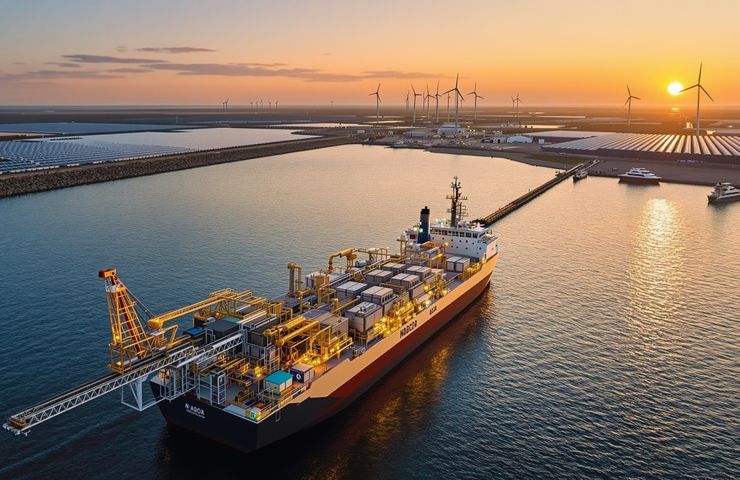
Hydrogen production: Morocco leans on natural gas infrastructure to boost green hydrogen ambitions
October 2, 2025Could natural gas be the unsung hero bridging today’s power grids with tomorrow’s zero-carbon goals? Well, Morocco is all in on that idea.
Natural Gas as a Strategic Bridge
At the bustling two-day World Power-to-X Summit in Marrakech—which organisers say drew around 2,000 delegates (official figures still pending)—Dr. Leila Benali, the Minister for Energy Transition and Sustainable Development, urged a down-to-earth approach. Instead of jumping straight from coal to a fully renewable mix, she argued, Morocco needs solid natural gas infrastructure to anchor reliable hydrogen production. It’s this sturdy foundation that’ll give big green hydrogen projects real credibility with investors.
Strategic Context in Morocco
Morocco, home to about 37 million people and a per-capita income near US$3,500, has long leaned on imported fossil fuels—coal still supplies nearly 70% of its electricity despite major investments in solar and wind. But the country’s got some serious strengths:
- Deepwater ports like Nador West Med and Safi ready for heavy cargo.
- Electricity interconnections to Spain and plans to link with Portugal.
- An established renewables sector, including the world’s largest concentrated solar power plant.
Right between Africa and Europe and already tied into Spain’s grid, Morocco enjoys a logistical edge. Layering natural gas into key coastal hubs smooths out the bumps of solar and wind, making the whole sustainable energy transition a lot more reliable.
Fast-Track LNG with FSRUs
One of Morocco’s headline moves is rolling out three Floating Storage and Regasification Units (FSRUs). Think of these as plug-and-play LNG terminals afloat. They’ll:
- Store liquefied natural gas in cryogenic tanks.
- Regasify LNG on demand with onboard vaporizers.
- Feed high-pressure gas directly into onshore pipelines.
One FSRU is earmarked for Nador West Med, with two more along the Atlantic coast. A formal request for proposals at Nador underscores just how keen Morocco is to lock in supply and ramp up capacity fast.
Green Hydrogen Production Process
With a gas backbone in place, Morocco plans to scale up green hydrogen via water electrolysis powered by its abundant solar and wind. The steps are straightforward:
- Use renewable electricity to split water into hydrogen and oxygen.
- Store and compress pure hydrogen for industrial use or export.
- Convert that hydrogen into clean ammonia to leverage global shipping routes.
By co-locating electrolyzers near the FSRUs and renewable parks, developers expect to smooth out energy flows, cut costs, and strengthen hydrogen infrastructure.
Scaling Up Ambitions
Morocco’s set some bold targets:
- 30% natural gas in its energy mix by 2030.
- Meeting over 4% of global hydrogen demand by that year.
- Reserving one million hectares for green hydrogen zones.
- Attracting US$32.8 billion in green hydrogen investments as of March 2025.
Securing offtake agreements with European partners will be key to hitting these goals and drawing in the necessary capital.
Economic and Geopolitical Implications
This strategy offers several perks:
- Creating thousands of jobs in construction, operations, and maintenance.
- Enhancing energy security by cutting coal dependence.
- Positioning Morocco as a hub for hydrogen and ammonia production serving Europe and Africa.
On the flip side, long-term gas contracts could lock in import dependencies. Moroccan authorities will need to balance transition goals with market realities to avoid stranded assets down the road.
Policy Momentum and Grid Integration
Morocco’s membership in the Powering Past Coal Alliance signals solid political backing for decarbonization. Yet, existing coal power purchase agreements stretch into the 2040s, complicating any early plant retirements. Blending intermittent renewables, gas peaker plants, and future hydrogen facilities will demand savvy grid management and new flexibility services.
Technical Considerations
FSRUs come with perks over land-based terminals: lower upfront costs, faster permitting, and modular capacity. But regasifying LNG requires energy and can create bottlenecks if pipeline infrastructure lags. Ensuring onshore network readiness is just as crucial as securing those floating assets.
Environmental and Social Impact
Swapping coal for gas could chop CO₂ emissions from power generation by roughly 40%, fitting neatly into Morocco’s broader sustainable energy roadmap. Still, it’s not a cure-all for zero emissions. Engaging local communities around ports, pipelines, and hydrogen plants will be vital—and training programs can help residents snap up new job opportunities.
Looking Ahead
Morocco’s bid to weave together natural gas, renewables, and hydrogen into a single energy ecosystem is both ambitious and pragmatic. Keep an eye on:
- The FSRU request for proposal at Nador West Med.
- Final investment decisions on major hydrogen electrolyzer hubs.
- Securing competitive gas supply contracts.
- Pipeline interconnection advances along the Atlantic corridor.
If everything falls into place, by 2030 Morocco could set the blueprint for how emerging economies use transitional fuels to launch a green hydrogen future.



 With over 15 years of reporting hydrogen news, we are your premier source for the latest updates and insights in hydrogen and renewable energy.
With over 15 years of reporting hydrogen news, we are your premier source for the latest updates and insights in hydrogen and renewable energy.